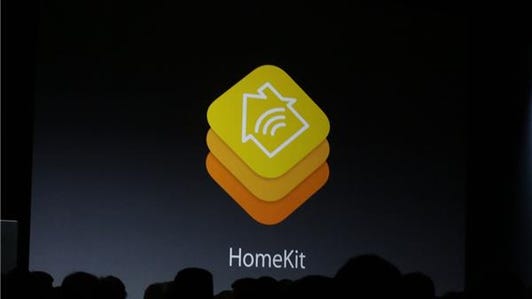This story is part of WWDC 2022, CNET’s complete coverage from and about Apple’s annual developers conference.
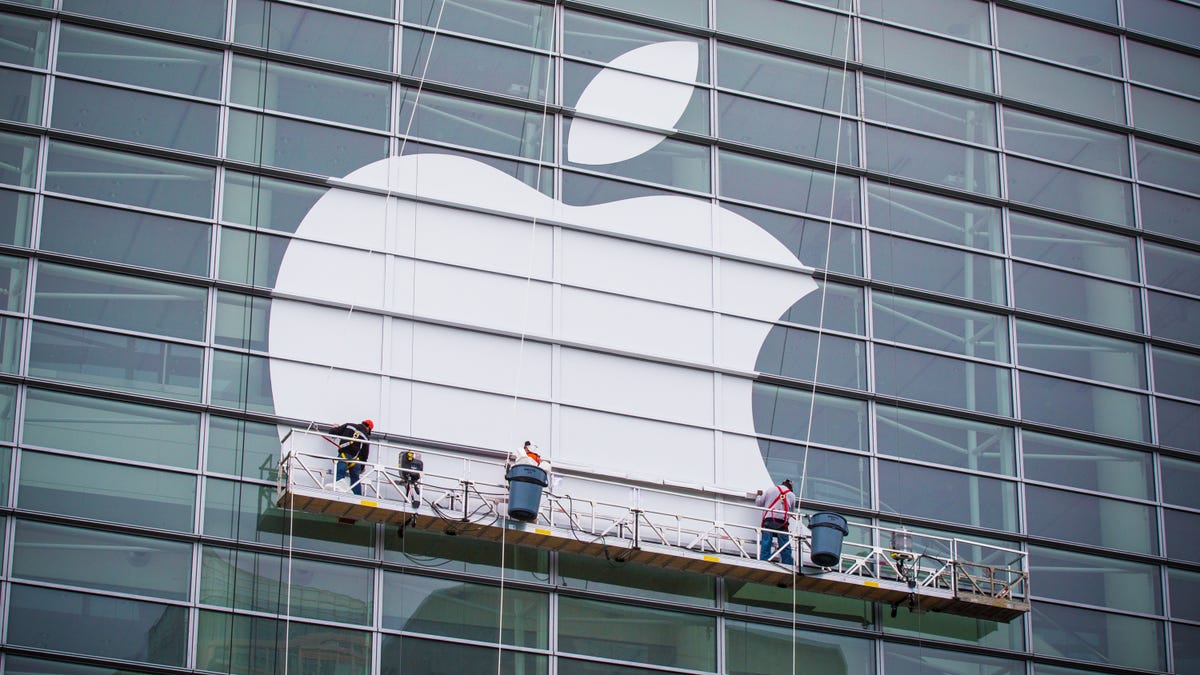
James Martin/CNET
There won’t be a new iPhone or iPad, and there definitely won’t be an Apple Car.
But what Apple’s developers conference on Monday will have is software — and plenty of it.
The Cupertino, Calif., consumer electronics giant will host its Worldwide Developer Conference from June 8 to 12 in San Francisco. More than 5,000 app makers will attend the two-hour keynote speech on Monday, as well as the more than 100 technical sessions held during the week for information about the software powering Apple’s various devices. The company typically uses its WWDC keynote to reveal features and new versions of its iOS and Mac OS X software, which power its mobile devices and computers, respectively.
This time around, that will include a new iOS for iPhones and iPads — likely called iOS 9 — and OS X 10.11 for Macs. The revamped Beats streaming music service, which Apple acquired last year, will make its formal debut. We also could hear more about Apple’s HomeKit home automation software and Apple Pay, the company’s mobile payments service. One thing that won’t make an appearance at WWDC is Apple TV. The company was expected to introduce a new TV box and online video service at the conference, but that has been pushed back.
See also
While Apple is probably best known for its hardware — slickly designed products such as the iPhone and iPad — just as important are the experiences on those devices. It’s critical that Apple make a strong impression at WWDC with the next version of its operating system. The company’s ability to control every aspect of its products — something that began when Steve Jobs and Steve Wozniak founded Apple in 1976 — has been a key ingredient for creating the tech juggernaut.
“What you get with Apple is a predictable package,” said Jan Dawson, chief analyst at Jackdaw Research. “You know these devices are going to work well together and get better over time.”
It’s vital for Apple to get developers excited about its newest software and devices because its continued success relies on the creation of new apps for its iPhone and iPad. Same for Apple Watch. People aren’t shelling out $349 to $17,000 just for a watch. Rather, they want a device that does things like call an Uber car from your wrist, unlock your hotel room by holding the smartwatch near the door or pay for groceries at Whole Foods.
Many developers have traditionally favored Apple’s iOS over Google’s Android operating system, opting to create apps for the iPhone, iPad and Apple Watch before making similar software for Android devices. That’s because they’ve traditionally made more money from iOS apps, and it’s often easier to make apps for Apple’s few devices instead of the dozens of different Android phones, tablets and smartwatches.
14 third-party Apple Watch apps we like (pictures)
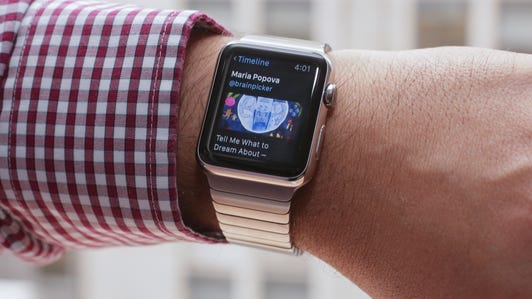

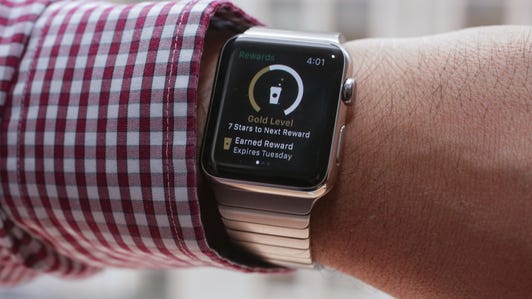



But earlier this year, Android surpassed iOS in mobile ad revenue for the first time, according to a May report by Opera Mediaworks. Stats from the report covering the first quarter of 2015 show Android with a share of 45.8 percent of all revenue generated by advertisements across mobile devices throughout the world, narrowly edging out iOS by a fraction of a percentage point. Also, since April 2014, Android has been outgunning iOS in mobile ad traffic, helping show the rise of Android devices.
Nearly half of all developer teams support iOS, while 62 percent of developers support Android phones and 36 percent make Windows Phone apps, according to Forrester Research.
“Apple needs to maintain its momentum and thought leadership coming out of WWDC,” Forrester analyst Frank Gillett said. He noted that while Google poses a threat, Android still suffers from slower adoption of the latest version of the software, as well as fragmentation. (There are over 400 companies making Android devices, 500 carriers supporting the operating system and 4,000 distinct Android devices available worldwide, according to Google at its developer conference last month.)
Apple declined to comment ahead of WWDC.
Here’s what Apple will talk about during its keynote at 10 a.m. PT on Monday. Tune back to CNET for a live blog and full coverage from the event.
iOS 9
Apple’s mobile operating system gets revamped every year and launches when its newest smartphones hit the market, typically in the fall, but WWDC acts as a preview for iOS. Jony Ive, Apple’s head of design, started overseeing the software with iOS 7 in 2013. iOS 8, which Apple revealed at last year’s WWDC and launched September 17, added much-desired functionality such as iCloud improvements and third-party app notifications. But it also was hurt by bugs and other problems.
This year’s update isn’t expected to include drastic changes but instead should refine what Apple has been doing over the past couple of years: making its various devices, including mobile and computers, talk to each other and make everything easier for users.


Now playing:
Watch this:
Music is key for Apple’s big show next week
3:00
iOS 9 could add support for Apple’s Force Touch feature, which mimics feeling the screen respond or click when you push on it — an illusion created by a small motor generates a small vibration.
Some other areas that could see improvements are the keyboard in iOS, and Siri, the company’s digital voice assistant.
Google in May showed off updates to its Google New feature, called Now On Tap, that predicts what you want to do such as showing gas stations along your route to the car rental office before you even ask. Apple is expected to respond with its own offering that seeks to provide you with relevant information from your calendar, contacts and other apps.
Mac OS X 10.11
Along with updating its mobile operating system, Apple will show off new features for its computer software, Mac OS X 10.11. The operating system had a big revamp last year with Mac OS X 10.10 Yosemite, making it likely this year’s update will largely be a refinement instead of a major overhaul.
Yosemite included features that allow you to “hand off” tasks. That includes letting you start a program — such as writing an email or composing a text — on an iPhone and then finish it on an iPad or Mac. Apple could show off other similar actions with the new operating system, and it’s also expected to talk up the security features of its software.
Beats/iTunes revamp
Apple hasn’t done much with Beats since buying the headphone maker and streaming music provider for $3 billion last year. That’s about to change. Apple likely will introduce a new music service that directly competes with Spotify, allowing users to stream songs instead of buy tracks and albums like in iTunes. It’s expected to cost $10 a month and feature celebrity DJs.
Apple revolutionized the music industry by letting consumers buy digital songs through iTunes, but people aren’t purchasing music like they used to. That makes it important for the company to offer a streaming service that goes beyond iTunes Radio, Apple’s basic streaming radio service that generates revenue from advertising. The new service, which should also be available on Android, likely won’t offer a free, ad-based streaming option, though Apple is expected to keep iTunes Radio going.
Apple Watch updates
Apple just introduced Apple Watch in April, but it’s already working on software updates. Apple at WWDC will detail a developer kit preview that will let app makers write software directly for the smartwatch, Jeff Williams, Apple’s senior vice president of operations since mid-2010, said at the Code conference in late May. That will make it easier to create more-powerful, so-called “native” apps that work on the device itself, which should improve the experience for Apple Watch users. It also should allow developers to take advantage of more Apple Watch features.
The Apple Watch wearable, which costs from $349 to $17,000, went on sale in late April, but there have been long shipping delays for customers ordering the device. It was initially only available online, which meant you couldn’t walk into an Apple Store and walk out with the device.
Apple on Thursday said the Apple Watch will be available in its brick-and-mortar retail stores within two weeks. And the company said all orders placed through May in the online store will ship to customers within two weeks — except for the $1,099 42mm space black stainless steel with space black link bracelet. In addition, Apple said it’s expanding the availability of Apple Watch to seven more countries, including Italy, Mexico, South Korea, Spain and Taiwan, starting June 26.
Apple Watch: A hands-on tour of Apple’s first smartwatch (pictures)
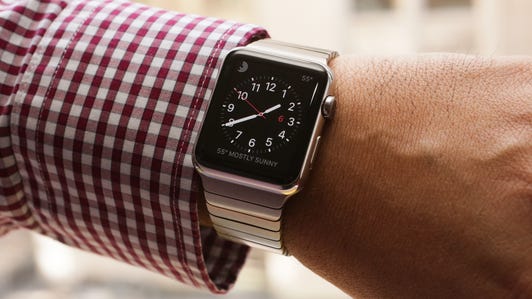



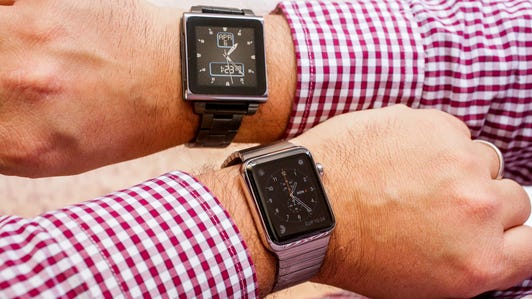

Swift/developer tools
WWDC won’t be all about software and services that consumers can see and use. We’ll likely also hear about efforts under the hood, including developer tools and an update to Swift, the programming language Apple first revealed at last year’s WWDC.
The company hoped Swift would make coding for apps easier, faster and more stable, while creating results that perform better in the end. It essentially promised to be a sort of a holy grail for developers.
While a discussion about Swift could get technical really fast, it’s something developers want to hear about. WWDC is for them, after all.
Apple Pay, HomeKit may get updates
Apple Pay, the company’s new mobile payments service, could see some additions at WWDC, including a possible rewards program. It has grown quickly since Apple launched it in October, though Apple now faces more competition from Google’s Android Pay, announced in late May, and Samsung’s mobile payments service, called Samsung Pay.
There also could be updates to HomeKit at WWDC. Apple first talked about HomeKit at its developer conference last year, but we haven’t heard much from the company since then. The feature allows developers to integrate controls for door locking, light dimming, and other home automation gadgets and features into iOS apps for the iPhone and iPad. That means users can control various connected devices from one app — even using Apple’s digital voice assistant, Siri — rather than switching back and forth between different programs.
Apple signed up many initial HomeKit partners, including thermostat-maker Honeywell and smart lock-maker August. There has been talk of delays, but Apple denied the reports and some partners announced products in early June. Lighting provider Lutron this week became one of the first companies to launch HomeKit-compatible hardware with its Caséta Wireless Lighting Starter Kit. We could hear about even more partners at WWDC or other ways HomeKit can be used.
Apple TV a no show…again
People have been waiting for a new Apple TV and streaming service for years, but they won’t make an appearance at WWDC. Instead, they’re something we’d likely hear about later this year or even next year after Apple secures all the deals with the content companies it needs to offer a complete product.
What Apple could talk about Monday is software that allows developers to make apps for Apple TV. But even such a minor update may not come until later this year.
To get everything that does come out of WWDC, tune back to CNET for our live blog and full coverage of the event.
Updated at 8:55 a.m. PT with information about Apple Watch availability in stores.
Round one of the Apple HomeKit product rollout (pictures)
